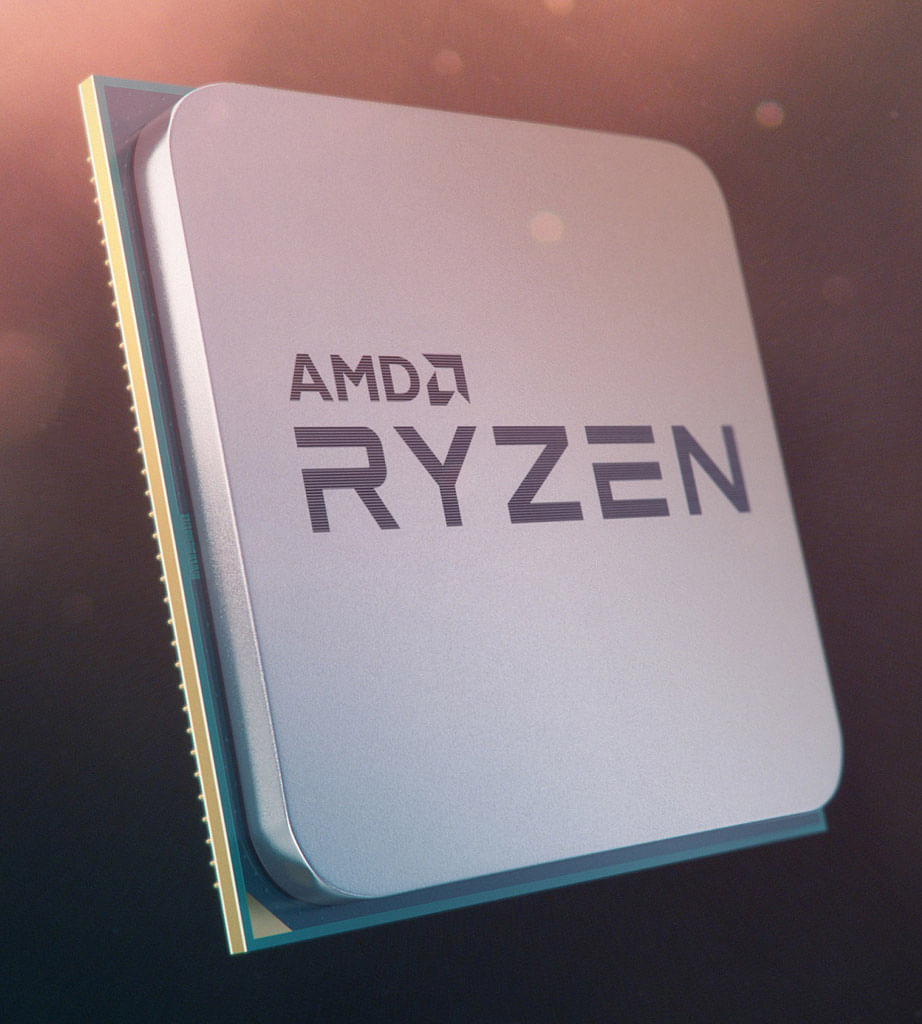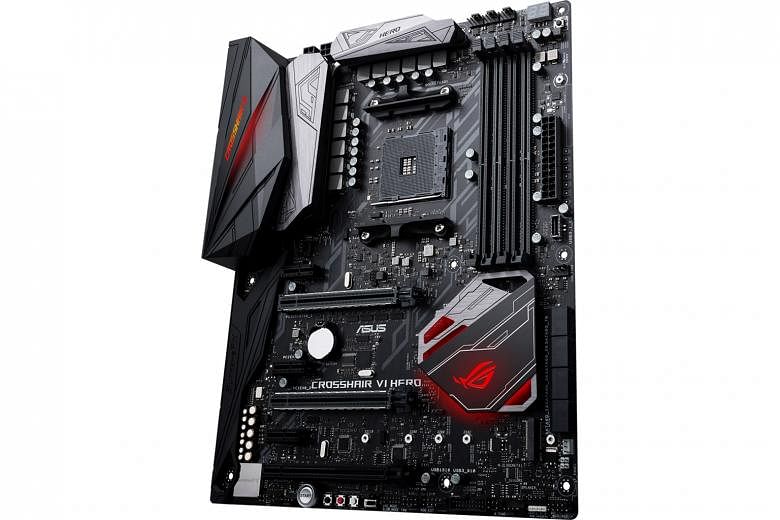AMD is a name that should be familiar to tech enthusiasts of a certain age. Back in its heyday in the early 2000s, the company was the David to Intel's Goliath.
But after hitting a number of home runs (Athlon K7 and K8) in the CPU business, AMD made the wrong design choices while Intel got its act together with the Core series of processors.
Subsequently, for over a decade, AMD failed to challenge Intel in the high-end or performance mainstream desktop PC market.
It did not help that, when AMD had the technically superior product, Intel engaged in anti-competitive practices such as paying PC vendors to use its chips over AMD's. Intel was later fined over a billion euros by the European Union, and settled with US regulators in an antitrust probe.
By the 2010s, AMD was losing hundreds of millions of dollars each quarter. You have to go as far back as September 2014 for its last profitable quarter - a measly US$50 million (S$70 million).
To its credit, AMD has been turning things around in recent years. It now makes the chips for both the Sony PlayStation and the Microsoft Xbox game consoles and its latest graphics cards are selling well, too.
AMD still lost money last year, but there is light at the end of the tunnel, thanks to its new Ryzen processor. PC enthusiasts who have been starved of choice when assembling their computers can finally rejoice.

ENTER RYZEN
Ryzen is AMD's attempt to return to the high-end computing segment. Built entirely from scratch, and in development since 2012, it is said to be more power-efficient and up to 52 per cent faster at performing instructions than previous AMD chips.
There are three tiers of Ryzen chips based on performance and pricing, mirroring Intel's Core i7, i5 and i3 positioning. The Ryzen 7 is intended for the high-end segment, the Ryzen 5 for the mid-range and Ryzen 3 for the budget segment.
Only the Ryzen 7 processors are available now, with Ryzen 5 expected to be available in the next quarter and Ryzen 3 in the second half of the year.
Three Ryzen 7 CPUs are available at launch: the 3.6GHz Ryzen 7 1800X ($818), the 3.4GHz Ryzen 7 1700X ($599) and the 3GHz Ryzen 7 1700 ($499).
Notably, these top-tier Ryzen 7 chips come with eight processing cores, and support simultaneous multi-threading (16 threads) like the HyperThreading technology in Intel's Core processors.
Ryzen is also emulating Intel's Turbo Boost feature, which gives your computer a short burst of performance by increasing the processor frequency above its base clock if the temperature and power requirements are met.
AMD's equivalent is Precision Boost, though Ryzen's clock speed increases in 25MHz increments instead of the 100MHz jumps used by Intel Turbo Boost.
This improved granularity, made possible by a large number of built-in sensors that provide the necessary information to the CPU, ensures that the processor is, more often than not, running at elevated speeds.
In addition, Ryzen processors with the X-suffix can go beyond the Precision Boost clock speed limit via a feature called Extended Frequency Range. As long as the CPU is being sufficiently cooled, the Ryzen chip can ramp up by an additional 100MHz.
These processors use the AM4 socket, which is supported on a bunch of new motherboards from major vendors like Asus, Gigabyte and MSI. Unlike Intel's processors, all Ryzen chips have an unlocked clock multiplier that lets users overclock them.
Overclocking is restricted by the type of motherboard, and is available only on higher-end boards with the X370 and B350 chipsets.
AMD provides a tool for enthusiasts who are keen to push the limits of the Ryzen chip. The Ryzen Master app lets you monitor and control the clock speed and voltages for both the CPU and the system memory. You can even disable some of the processor cores to achieve a higher clock speed for the remaining ones.
-
Test set-up
-
• AMD Ryzen 7 1800X
• 16GB DDR4 RAM
• Asus ROG Crosshair VI Hero
• Samsung 960 PRO SSD 512GB
• Nvidia GeForce GTX 1070 (376.33 drivers)
• Windows 10 Anniversary Edition
TESTING THE AMD RYZEN 7 1800X
The Ryzen 7 1800X is intended to go against the eight-core Intel Core i7-6900K (around $1,500). However, I did not have this processor on hand to compare against my 1800X sample. AMD's own benchmarks generally had the 1800X faster or on a par with the i7-6900K, in CPU-intensive tests like the Handbrake video transcoding software.
I did manage to test the 1800X against the Core i7-7700K, Intel's latest seventh-generation quad- core processor.
In PCMark 8 Home, which tests basic computing tasks, the 1800X scored 4,599 compared with 5,035 for the Core i7-7700K. A higher score is better.
The Intel chip appears to have the advantage in games, especially with its higher clock speed. It got around 147 frames per second (fps) in Doom at 1,920 x 1,080 pixels and at Ultra setting. The Ryzen 7 1800X managed 119fps.
In Civilization VI's AI benchmark, which measures the time the computer takes to decide its next move in this turn-based strategy game, the i7-7700K took 20.96sec, while the 1800X was a fraction behind at 21.07sec.
It is in multi-threaded benchmarks that the 1800X gets to shine. In the Cinebench R15 3-D rendering benchmark, the 1800X scored 1,622 in the multicore test compared with 998 for the i7-7700K. But the single-core test reflected its performance gap with the i7-7700K. The 1800X had a score of 161 to the i7-7700K's 198.
In other words, Ryzen shines when apps, like the ones used in server or workstation settings, actually use its eight cores.
Prosumers, like content creators and video game streamers who broadcast their gaming sessions on YouTube or Twitch, will also find the Ryzen 7 a good fit.
In short, the Ryzen 7 1800X seems like a steal at $818, if you are in the market for an eight-core CPU for work as the Intel equivalent i7-6900K is around $1,500.
Ordinary consumers - who consume media, use office productivity apps and play games - will not use Ryzen to its full potential. They are better off with the Core i7-7700K that can be bought for $498.
Mind you, the Ryzen 7 is still a very capable CPU in games. But a gamer would find the Core i7-7700K cheaper and faster.
• Verdict: AMD is back with a high-end CPU offering that excels in productivity apps, but is not as good as the competition in games.


